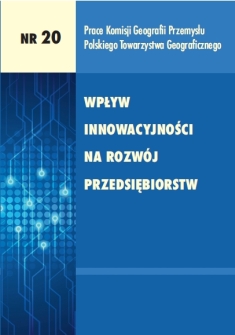IBM – International Business Innovative
DOI:
https://doi.org/10.24917/20801653.20.3Keywords:
innowacyjność, IBMAbstract
Innovation seen as the development of new methods, tools, new approaches and improvement of the existing processes is generally synonymous with “young” and modern companies. Hardly anyone would expect after 100 years of a company’s existence that it is able to continually meet the highest standards of business and compete on the international market, especially in terms of innovation. An example of such a company is International Business Machines (IBM). The company was founded in 1911 and initially dealt with the production of various equipment: weights, meat slicers, or data storage media, such as punch cards and machines for them. The latter have become over time the most important activity of the corporation. At the turn of the 1960s, IBM introduced hard disk drives, developed the world’s first storage, and introduced to customers the software language Fortran, which is still in use. In 1969, IBM computers were used by NASA during the first man on the moon mission. In 1981, the company created the first personal computer IBM 5150 PC, which the weekly magazine “Time” dubbed “machine of the year”. Thanks to its innovations, regardless of the era, IBM has always been ahead of the reality in which it is located. Today IBM announced that in 2019 it will have a supercomputer, which should come close to matching the power of the human brain. At the moment, BlueGene already copies 4.5% of human brain activity. The activities of such a powerful company are not only associated with market developments. In the 1990s, the company began to focus on new market areas, in particular services. In November this year, IBM introduced the five innovations that over the next five years would significantly improve the quality of life of urban citizens around the world, as well as reduce potential hazards. Therefore, the vision of the company seems to be right - our customer’s success, innovation for us and the world. The purpose of this paper is to present innovative solutions implemented by IBM in terms of technology and services.Downloads
Metrics
References
Bal-Woźniak T., 2009, Infrastruktura systemu innowacyjnego jako czynnik transformacji struktur przemysłowych, [w:] Prace Komisji Geografii Przemysłu Polskiego Towarzystwa Geograficznego, nr 12, Warszawa–Kraków, s. 45–57.
Borowiec M., Dorocki S., Jenner B., 2009, Wpływ zasobów kapitału ludzkiego w kształtowanie społeczeństwa informacyjnego i innowacyjności struktur przemysłowych, [w:] Prace Komisji Geografii Przemysłu Polskiego Towarzystwa Geograficznego, nr 13, Warszawa–Kraków, s. 95–109.
Gierańczyk W., 2009, Innowacyjność jako główny filar społeczeństwa informacyjnego Europy, [w:] Prace Komisji Geografii Przemysłu Polskiego Towarzystwa Geograficznego, nr 12, Warszawa–Kraków, s. 82–94.
Grad N., 2007, Sytuacja polskiej Gospodarki Opartej na Wiedzy na tle innych krajów Unii Europejskiej, [w:] Europa Młodzieży – Młodzież Europie, Wyd. TIAL, Łódź, s. 9–16.
Kilar W., 2009, Rola korporacji Apple w kształtowaniu społeczeństwa informacyjnego, [w:] Przedsiębiorczość-Edukacja, nr 5, Warszawa–Kraków, s. 48–57.
Kilar W., 2009, Zróżnicowanie potencjału ekonomicznego światowych korporacji informatycznych, [w:] Prace Komisji Geografii Przemysłu Polskiego Towarzystwa Geograficznego, nr 13, Warszawa–Kraków, s. 110–121.
Kukliński A. (red.), 2001, Gospodarka oparta na wiedzy. Wyzwania dla Polski XXI wieku, Komitet Badań Naukowych, Warszawa.
Zioło Z., 2006, Zróżnicowanie światowej przestrzeni przemysłowej w świetle koncentracji siedzib zarządów wiodących korporacji, [w:] Prace Komisji Geografii Przemysłu Polskiego Towarzystwa Geograficznego, nr 8, Warszawa–Kraków, s. 9–26.
Zioło Z., 2009, Procesy kształtowania się światowych korporacji i ich wpływ na otoczenie, [w:] Prace Komisji Geografii Przemysłu Polskiego Towarzystwa Geograficznego, nr 12, Warszawa–Kraków, s. 11–31.
Strony internetowe
ftp://public.dhe.ibm.com /annualreport/2010/2010_ibm_annual.pdf – roczny raport finansowy IBM
http://www.businessweek.com/interactive_reports%20/it100_2009.html
http://www.stock-analysis-on.net/NYSE/Company
http://komputerwfirmie.gazeta.pl
http://www.interbrand.com/en/best-global-brands – raport Best Global Brands
http://www.forbes.com/global2000/list/
Downloads
Published
How to Cite
Issue
Section
License
Articles are published under the terms of the Creative Commons License (CC BY-ND 4.0; Attribution– NoDerivs).

